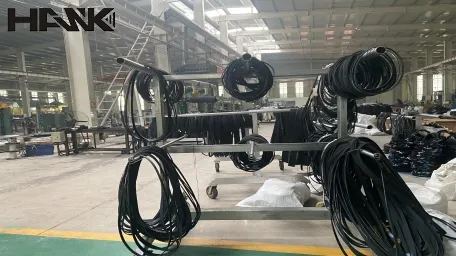- Arabic
- French
- Russian
- Spanish
- Portuguese
- Turkish
- Armenian
- English
- Albanian
- Amharic
- Azerbaijani
- Basque
- Belarusian
- Bengali
- Bosnian
- Bulgarian
- Catalan
- Cebuano
- Corsican
- Croatian
- Czech
- Danish
- Dutch
- Afrikaans
- Esperanto
- Estonian
- Finnish
- Frisian
- Galician
- Georgian
- German
- Greek
- Gujarati
- Haitian Creole
- hausa
- hawaiian
- Hebrew
- Hindi
- Miao
- Hungarian
- Icelandic
- igbo
- Indonesian
- irish
- Italian
- Japanese
- Javanese
- Kannada
- kazakh
- Khmer
- Rwandese
- Korean
- Kurdish
- Kyrgyz
- Lao
- Latin
- Latvian
- Lithuanian
- Luxembourgish
- Macedonian
- Malgashi
- Malay
- Malayalam
- Maltese
- Maori
- Marathi
- Mongolian
- Myanmar
- Nepali
- Norwegian
- Norwegian
- Occitan
- Pashto
- Persian
- Polish
- Punjabi
- Romanian
- Samoan
- Scottish Gaelic
- Serbian
- Sesotho
- Shona
- Sindhi
- Sinhala
- Slovak
- Slovenian
- Somali
- Sundanese
- Swahili
- Swedish
- Tagalog
- Tajik
- Tamil
- Tatar
- Telugu
- Thai
- Turkmen
- Ukrainian
- Urdu
- Uighur
- Uzbek
- Vietnamese
- Welsh
- Bantu
- Yiddish
- Yoruba
- Zulu
ನವೆಂ . 22, 2024 09:10 Back to list
timing belt and chain
Understanding Timing Belts and Chains Essential Components of Internal Combustion Engines
When it comes to the intricate workings of an internal combustion engine, timing belts and timing chains are two essential components that play a crucial role in ensuring the engine runs smoothly and efficiently. Both serve the same fundamental purpose to synchronize the rotation of the crankshaft with the camshaft, thereby managing the opening and closing of the engine’s valves. However, they differ significantly in terms of design, maintenance, and overall performance.
What is a Timing Belt?
A timing belt is a flexible loop made of reinforced rubber, often featuring teeth along its inner surface. These teeth grip the pulleys attached to the crankshaft and camshaft, allowing for precise timing of the valve movement. Timing belts are typically found in many modern passenger vehicles due to their lightweight construction, low noise levels, and lower production costs.
Advantages of Timing Belts
1. Quieter Operation Timing belts operate more quietly than chains, which can be beneficial for driver comfort. 2. Lightweight Design The lightweight nature of timing belts contributes to improved fuel efficiency. 3. Cost-Effective Timing belts are generally less expensive to manufacture than chains, which can make vehicles cheaper to produce.
Disadvantages of Timing Belts
1. Durability Concerns Timing belts have a limited lifespan, typically requiring replacement every 60,000 to 100,000 miles, depending on the manufacturer’s specifications. 2. Failure Risks If a timing belt fails, it can lead to catastrophic engine damage due to the interference design, where the pistons and valves can collide.
What is a Timing Chain?
In contrast, a timing chain is made of metal links and functions similarly to a bicycle chain. Timing chains are typically found in older engines and high-performance vehicles, known for their durability and longevity. Unlike timing belts, they are designed to last the life of the engine, often exceeding 200,000 miles without needing replacement.
timing belt and chain

Advantages of Timing Chains
1. Longevity Timing chains can last much longer than timing belts without requiring replacement, reducing maintenance costs over the vehicle's lifespan. 2. Durability Made of metal, timing chains are less prone to wear and tears compared to belts. 3. Reliability Because they are less likely to fail suddenly, timing chains can offer more reliability in performance.
Disadvantages of Timing Chains
1. Noise Timing chains can be noisier than belts, which may affect the overall driving experience. 2. Weight The metal construction and additional components (like tensioners) make timing chains heavier, potentially affecting fuel efficiency. 3. Higher Costs Manufacturing and replacing timing chains can be more expensive due to the complexity and required labor.
Maintenance Considerations
Both timing belts and chains require some degree of maintenance to ensure the engine operates effectively. For timing belts, regular inspections are critical, and owners should adhere to the manufacturer’s recommended replacement schedule to prevent sudden failure. During replacement, it is often advisable to change the water pump and tensioners, as these components can affect the timing belt's performance.
For timing chains, while they generally require less frequent replacement, it is essential to maintain proper oil levels and quality. The oil lubricates the chain and its accompanying components, preventing excessive wear. Neglecting oil changes can lead to chain slippage or failures.
Conclusion
In summary, timing belts and chains are vital components of an engine's operation, each with its unique advantages and disadvantages. Understanding their differences can help vehicle owners make informed decisions regarding maintenance and repairs. While timing belts may offer cost savings and quieter operation, timing chains provide durability and reliability. Ultimately, whether your engine uses a belt or a chain, regular maintenance is key to ensuring optimal performance and longevity of your vehicle. Emphasizing timely checks and replacements will not only keep the engine running smoothly but also save you from potentially costly repairs down the road.
-
China Factory 6PK1130 EPDM Rubber Engine Conveyor Belt Supplier
NewsJul.21,2025
-
Korean Auto Parts Timing Belt 24312-37500 For Hyundai/Kia
NewsMar.07,2025
-
7PK2300 90916-T2024 RIBBED BELT POLY V BELT PK BELT
NewsMar.07,2025
-
Chinese Auto Belt Factory 310-2M-22 For BMW/Mercedes-Benz
NewsMar.07,2025
-
Chinese Auto Belt Factory 310-2M-22 For BMW/Mercedes-Benz
NewsMar.07,2025
-
90916-02660 PK Belt 6PK1680 For Toyota
NewsMar.07,2025

